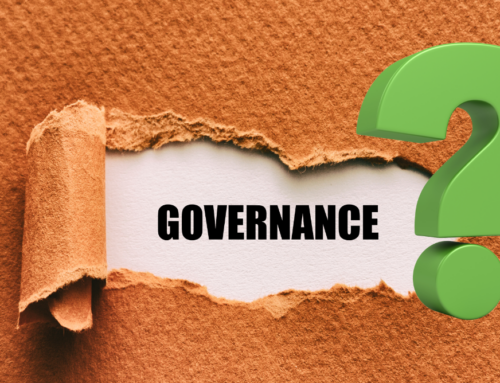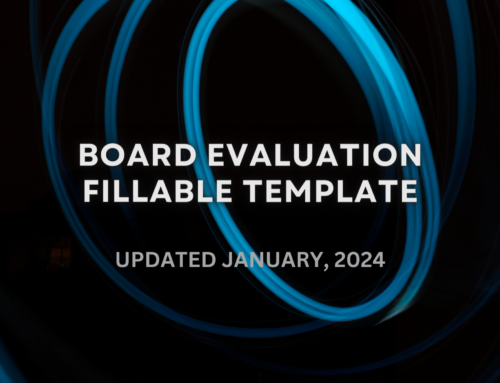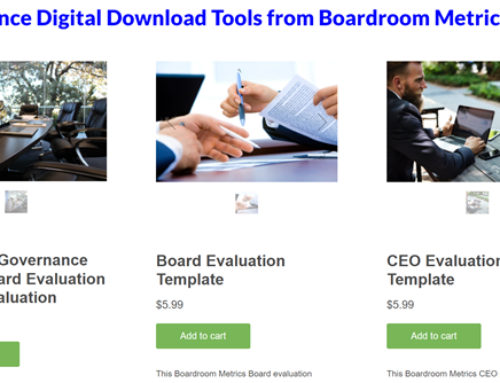WHAT IS CORPORATE GOVERNANCE
UPDATED FEB 2024 – DIRECTORS GUIDE TO CORPORATE GOVERNANCE
Fillable Workbook and Board Self-Evaluation
The Directors Guide to Corporate Governance is a 44 page fillable workbook. It explains corporate governance and helps Directors apply it to their Boards. New Directors will find that it is an ideal on-boarding tool. The completed workbook provides a complete, current Board evaluation that every Board will find insightful. Price is $6.99.
More information is here or purchase now.

“Interesting orientation tool. Governance totally related to our Board.”
What is Corporate Governance?
Corporate governance is most effective when Directors share a common definition of corporate governance, the Board’s governance role and the key building blocks for achieving effective corporate governance.
This presentation has been used by Associations, private business and not-for-profit Boards of Directors to define corporate governance and the role of the Board of Directors.
The presentation can be dowloaded using the button below. An explanation of each slide follows here.
There are some helpful governance tools at the end of this page.
Slide # |
What is Corporate Governance – Board of Directors Orientation Content Summary |
1 |
Title slide: Board of Directors OrientationPrepared by Jim Crocker, Chair, Boardroom Metrics |
2 |
Governance failuresGE. Boeing. Volkswagen. Wells-Fargo. Many others. Governance fails regularly. Often it is not reported as a governance failure. Frequently, it appears as a management failure. However, oversight of management is the Board’s responsibility. |
3 |
Governance EffectivenessGovernance is most effective when everyone on the Board shares a common understanding of the Board’s role (rowing for the same team). What we find in our work: many Directors are uncertain of the Board’s role. Fortunately, the role of a governance Board is not complicated. |
4 |
The Role of the Board of DirectorsThere are three elements of a Board’s role: 1) identify risk 2) validate and oversee strategies for mitigating risk and achieving the organization’s mission 3) performance manage the CEO – the person responsible for executing strategy. Many Boards spend time on other issues. It confuses Directors and decreases governance effectiveness. |
5 |
Title Slide: What are the building blocks of an effective Board of Directors? |
6 |
Five element of Board effectiveness:1) composition 2) information 3) leadership 4) process 5) culture |
7 |
Building Block 1: Board CompositionBoard composition should reflect the skills and expertise required for the Board to perform its role including those who understand critical elements of risk, strategy, and performance management. Director competency (competency-based Boards) is a significant trend in governance effectiveness. |
8 |
Sample Board Skills MatrixThe Board skills matrix is a common tool for assessing what skills and expertise the Board requires and where there are competency gaps on the Board to fill those requirements. To use the skills matrix begin on the top axis to identify the ideal skills and expertise for the Board. Then work down the left column identifying where current directors fit and where there are gaps. This example highlights two findings: 1) nobody on the Board fills the technology requirement 2) Director D doesn’t fill any of the identified requirements (however, they may fill some role not identified in this example) |
9 |
New Director WishlistFrom Spencer Stuart 2016 Survey. What it shows is the type of experience/expertise/makeup Directors would like to see added to their Boards of Directors. |
10 |
Building Block 2: Decision-Making Information the Board ReceivesPressures on a Board – 1) they must get info to help them with risk, strategy, performance management 2) they can’t be overloaded. Solution: only give them the right information. |
11 |
The right information for the Board of Directors:1) on risk – legal, financial, market, operations 2) strategy info on mitigating risk, achieving the organization’s mission 3) performance information on targets, results, achievements |
12 |
Building Block 3: Board LeadershipBoard leadership including the Board Chair and Committee Chairs must be competent and experienced. |
13 |
Required Board Leadership Capabilities:
Includes understanding of corporate governance, governance process, leadership, and knowledge of the business. |
14 |
Building Block 4: Board ProcessesEffective Boards are supported by effective processes that support knowledge gathering, decision making, follow-up and oversight of execution. |
15 |
Key Board Processes Include:1) distribution of information – in time for Directors to assess and make conclusions 2) Board meetings that are focused on risk, strategy and performance management – many Board meetings are NOT 3) CEO and Board Effectiveness assessments that help the Board oversee the operation and their own governance effectiveness 4) how the Board interacts with management – for Boards that are too deep in the operation, defining this process is critical for ensuring a focus on oversight |
16 |
Building Block 5: Board DynamicsIn addition to skills and competency, Directors must be able to work together; they must be able to respect each other, even if they disagree |
17 |
Key Board dynamics Include:Respect, objectivity and collaboration. We have added humility and paranoia. When things are going well Boards can lose sight of what can go wrong. It’s actually very common. Boards must stay humble and paranoid so that they are not surprised by reality. |
18 |
Title Slide: Measuring Board Effectiveness |
19 |
Sample Board Evaluation ToolIn addition to leading external Board evaluations, Boardroom Metrics provides some simple, easy to use Board Evaluation tools for evaluating governance effectiveness. Caution: over time as both consultants and Directors we have learned that Boards who self-evaluate tend to over-rate their governance effectiveness. This is especially true when Directors lack a common understanding of their role and what it is they are evaluating. |
20 |
Assessing Board ImpactWe all like to know that we are making a difference. We’ve found these three questions to help a Board evaluate what impact it’s having. For example: if there was no Board, what would be different? |
21 |
Thank you.Boardroom Metrics works with public, private and not-for-profit organizations on evaluating and maximizing governance effectiveness. Our services include Board and EO evaluations, governance education and governance consulting. Our email is [email protected] |











Leave A Comment